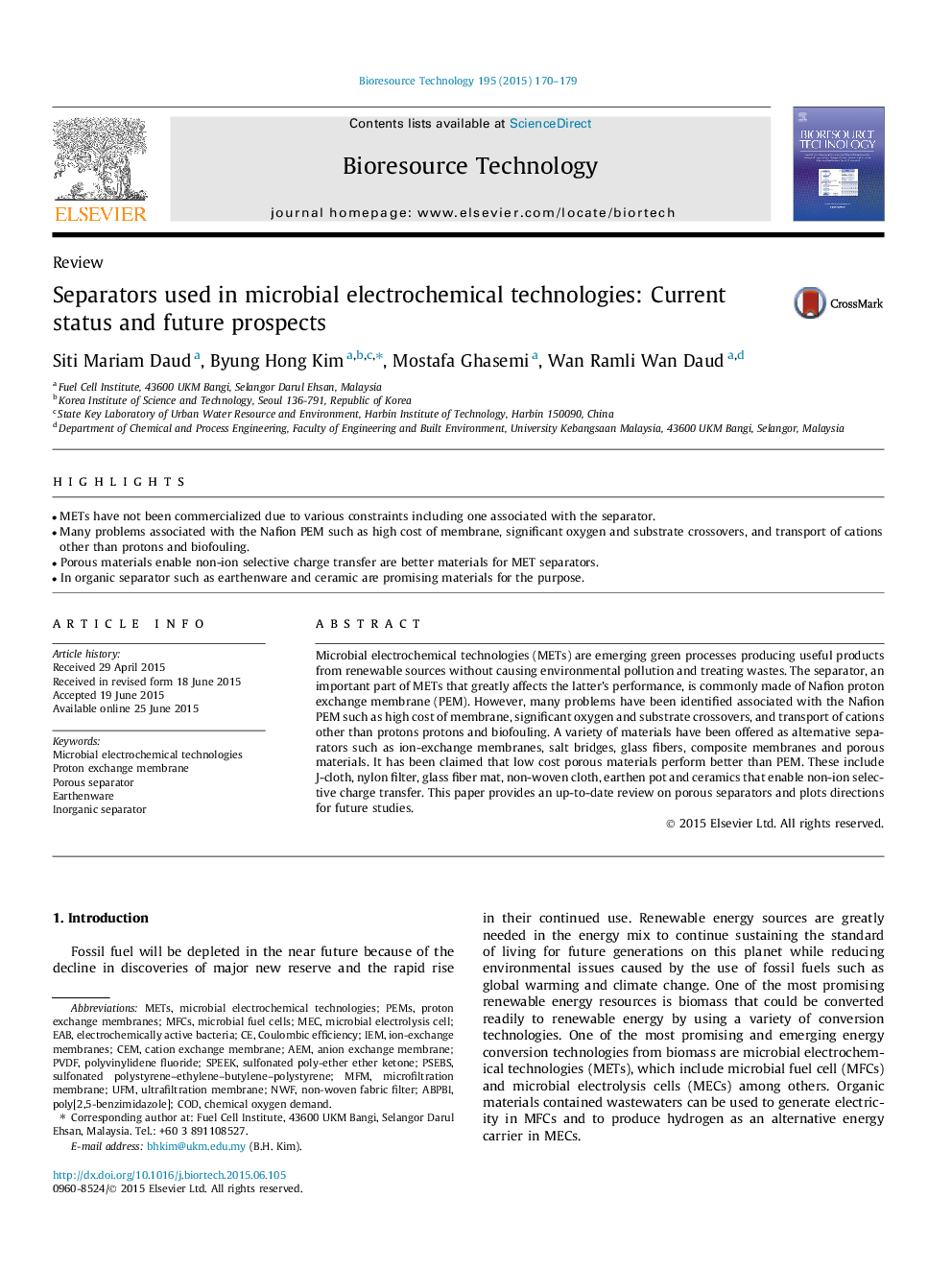| کد مقاله | کد نشریه | سال انتشار | مقاله انگلیسی | نسخه تمام متن |
|---|---|---|---|---|
| 679526 | 1459948 | 2015 | 10 صفحه PDF | دانلود رایگان |
• METs have not been commercialized due to various constraints including one associated with the separator.
• Many problems associated with the Nafion PEM such as high cost of membrane, significant oxygen and substrate crossovers, and transport of cations other than protons and biofouling.
• Porous materials enable non-ion selective charge transfer are better materials for MET separators.
• In organic separator such as earthenware and ceramic are promising materials for the purpose.
Microbial electrochemical technologies (METs) are emerging green processes producing useful products from renewable sources without causing environmental pollution and treating wastes. The separator, an important part of METs that greatly affects the latter’s performance, is commonly made of Nafion proton exchange membrane (PEM). However, many problems have been identified associated with the Nafion PEM such as high cost of membrane, significant oxygen and substrate crossovers, and transport of cations other than protons protons and biofouling. A variety of materials have been offered as alternative separators such as ion-exchange membranes, salt bridges, glass fibers, composite membranes and porous materials. It has been claimed that low cost porous materials perform better than PEM. These include J-cloth, nylon filter, glass fiber mat, non-woven cloth, earthen pot and ceramics that enable non-ion selective charge transfer. This paper provides an up-to-date review on porous separators and plots directions for future studies.
Journal: Bioresource Technology - Volume 195, November 2015, Pages 170–179
